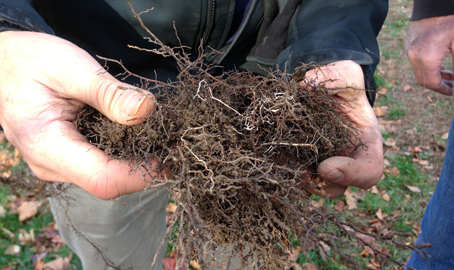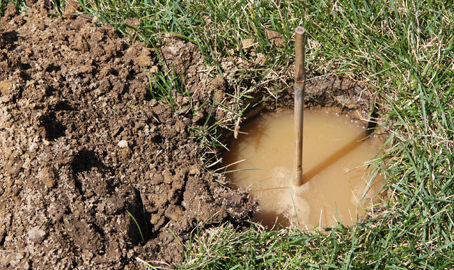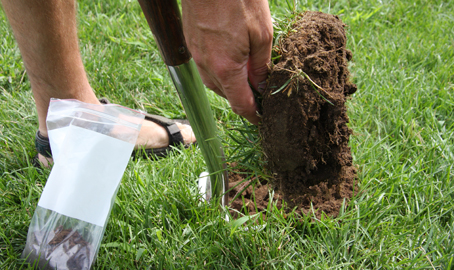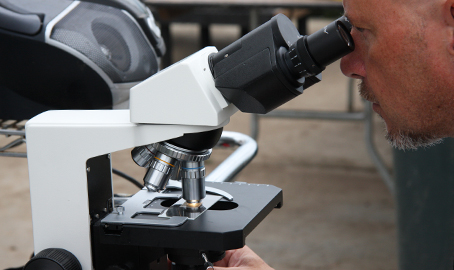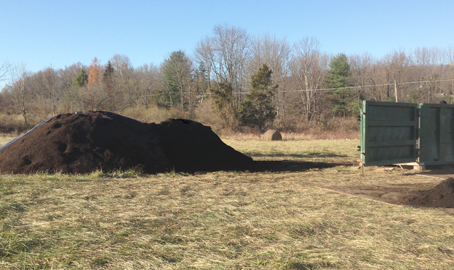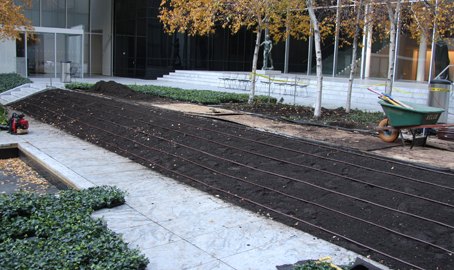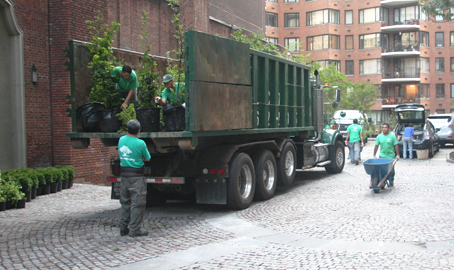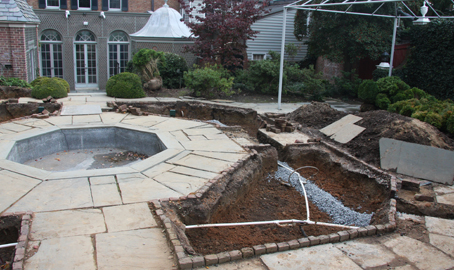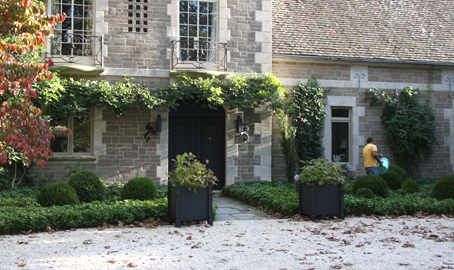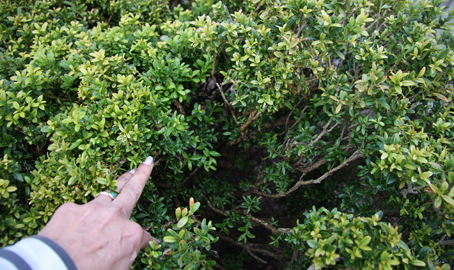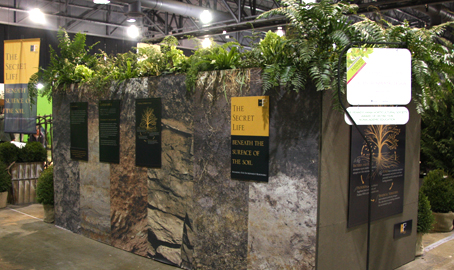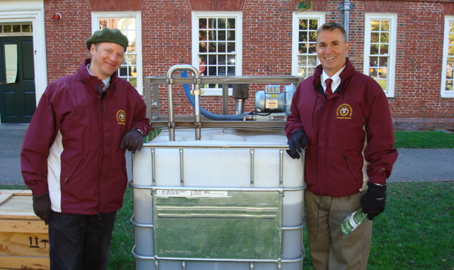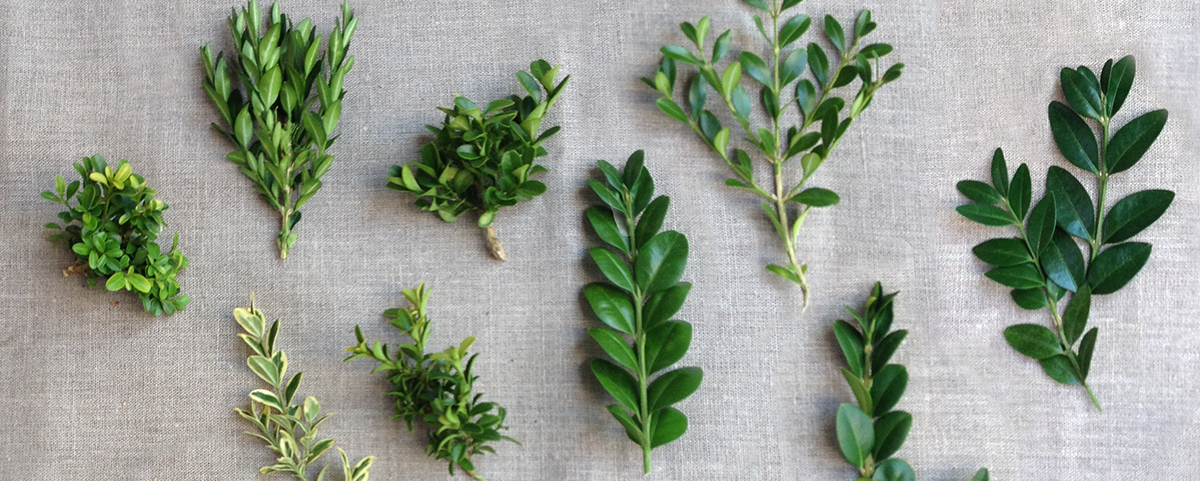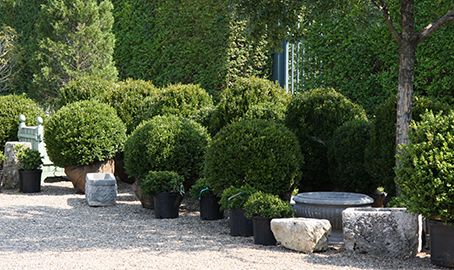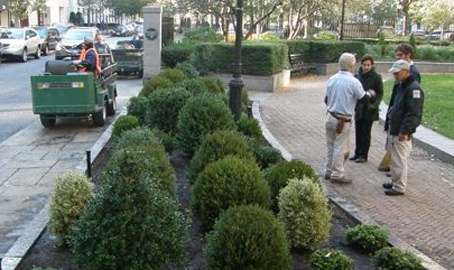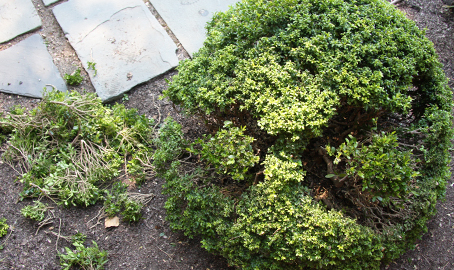

| Mission | Method | Services | Boxwood | Results | Projects | News | Lectures & Symposiums | About | Contact |
Click or Scroll Down for Details
Landscape Diagnosis & Health Management
|
![]()
Soil Specifications & Soil Testing
|
||||||||
| Soils and compost are tested regularly in-house and sent out to independent labs for chemical, biological, and textural analysis. |
![]()
Customized Soil Blends
|
![]()
Soil, Plant, & Hardscape Installation
|
![]()
Site Maintenance
|
![]()
Liquid Biological Amendment Application & System Design
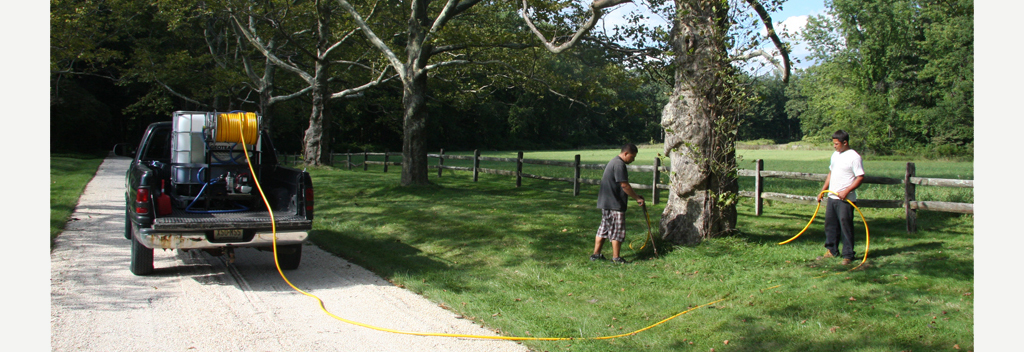
Compost Tea is a liquid biological amendment created from a combination of different composts, specific to the type and needs of the plant material. The process consists of first placing compost in a water medium. Next, oxygen is added via an air pump, which diffuses the compost and encourages beneficial organisms from the compost to enter the water. Finally, both fungal and bacterial foods are added to the water so the organisms can grow and multiply. These foods include fish emulsion, kelp, molasses, soy or wheat flour, and humic acid. The result is a brew that is full of beneficial soil organisms. During the brewing process, bacterial populations, on average, double every half hour. Compost tea, when applied properly, helps to correct imbalances that may exist in the soil. Applications are particularly beneficial for trees and lawns for which a high percentage of organic matter is undesirable, but which need the beneficial organisms. By encouraging a diverse, balanced microbial soil environment, we build an effective natural nutrient cycling system, avoiding the use of chemical pesticides and fertilizers |
![]()
Compost Application & Facility Design
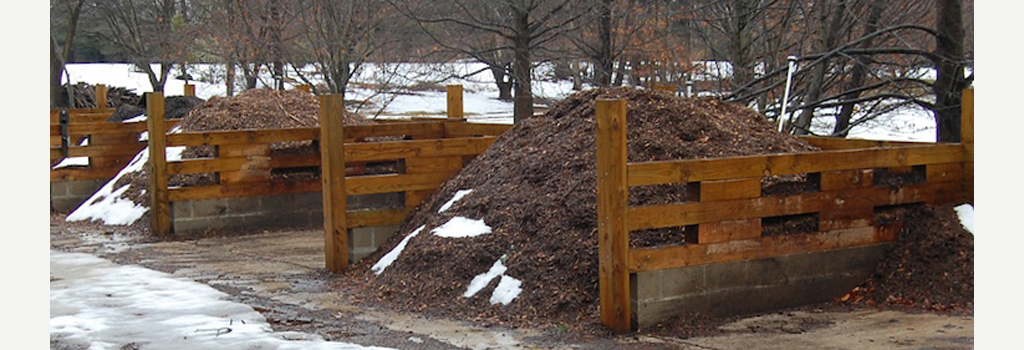
Compost is an excellent source of beneficial organisms, including bacteria, fungi, protozoa, and nematodes, that create a balanced soil ecology in topsoil. It is important to select the proper compost based on the type of plants within your landscape. In general, turf, grasses, and perennials require higher bacterial populations, while more complex landscapes with trees and shrubs benefit from higher fungal populations. Grasses, Annual, Perennials, and Vegetables Trees and Shrubs Key Elements when Composting 1. Temperature. The temperature of the compost is critical for thermal composting done in windrows or in-vessel units (for vermicomposting, or breaking down of organic waste with worms, a non-thermal process occurs). For the windrow or in-vessel processes, the temperature must remain above 131 degrees for a minimum of three days, but never rise above 160 degrees. This is hot enough to kill weed seeds and pathogens, but not so hot as to kill beneficial, cultivated organisms. 2. Aeration. This must be done regularly to ensure proper temperature and the creation of a consistent mix. In a windrow, this is done by a front loader; an in-vessel unit requires an agitator or air pump. 3. Plant Material. The plants within a landscape will dictate the type of organisms that need to be cultivated. In general, turf, grasses, and perennials require higher bacterial populations, while more complex landscapes (trees and shrubs) require higher fungal populations in the soil. A fungal mix is also used for controlling diseases in all types of plant material. |
![]()
Comprehensive Landscape Design
At F2 Environmental Design we believe that the best way to create a healthy stable landscape is to begin by choosing plants that best suit that landscape and planting those plants in a manner that is consistent with their natural growth habit. This is a truly holistic approach that takes the entire nutrient cycle into account, designing literally from the ground up. The astatic we produce has been featured in such things as the New York Time, and Elle Decor. |
![]()
Environmental Restoration
|
Training, Education & Outreach
|
Onsite Landscape Management Training & Workshops |
Boxwood - Nursery Propagation
|
F2 Design specializes in deer resistant plantings that are managed with out the use of chemical fertilizers or pesticides. The boxwood nursery grew out of a passion for boxwood and the need for a source of plants that are free of disease. F2 Environmental Design chose to do specific research on boxwood, because it is a plant that has been historically mismanaged and our organic methods would benefit this large complex family of plants. If it is successful with boxwood, it can be successful with virtually any plant palette. The latest influx of the boxwood blight, Cylindrocladium buxicola, emphasizes the need for a shift in cultural practices. With proper soil management, the use of appropriate cultivars specifically chosen for the site, proper cultural practice, the absence of chemical fertilizers, and pesticides, the plants thrive within our projects and designs. |
| LINKS TO BOXWOOD RESOURCES | ||||||||||||
|
||||||||||||
| ©F2 Environmental Design |
